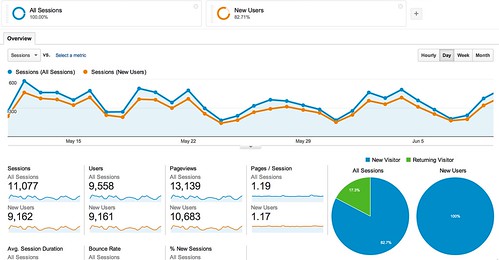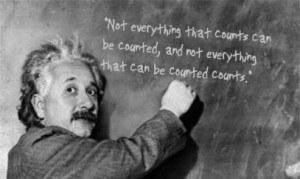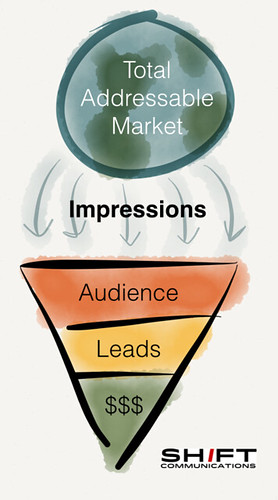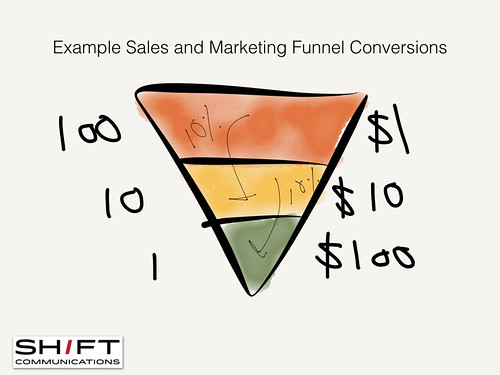One of the most challenging questions any PR professional is faced with is the inevitable, “What is the ROI of PR?” that you hear in pitches, in new business meetings, and muttered in the hallways of companies everywhere.
Chief marketing officers and decision makers are accustomed to – and rightly so – understanding what value they get out of what they put into any marketing program.
Compounding this is the frequent self-imposed limitation that PR professionals parrot,“I went into PR because I’m bad at math,” which is a separate conversation entirely.
The painful effect of these combined factors means that PR professionals are distrusted by the corner office when it comes to results, and that means PR gets a smaller share of the budget pie than perhaps it should.
Why is the return-on-investment discussion so hard to navigate, and what can we do about it?
Strategic ROI of PR
First, the strategic reason. The ROI of PR has traditionally been difficult to assess because PR professionals and stakeholders don’t understand the measurable output.
Let’s review from the bottom to the top of the sales funnel.
At the bottom of every funnel is revenue and sales. It is the responsibility of sales professionals to generate revenue from leads.
In the middle of the funnel is the domain of marketing: Lead generation.
Leads are drawn from the audience a brand has, and through the use of marketing tools and tactics, those parts of the audience who are interested in potentially doing business self-identify (or at the most aggressive shops, get cold-called) by raising their hands.
At the top of the funnel are the audiences and loyal fans that brands have, the people who are becoming aware of the brand via all of its communications.
These audiences come from the addressable markets that a brand can potentially serve, and it’s the job of public relations and advertising to build those audiences and to identify and cultivate those loyal fans of your brand.
PR vs. Marketing vs. Sales
Why is this distinction so important?
The reason is simple: If you’re measuring the effectiveness of PR on anything other than audiences – such as lead generation or sales – then you’re not measuring PR.
You’re measuring marketing or sales effectiveness, which is not the same thing.
Here’s a simple illustration: Imagine you own a coffee shop.
Now imagine you hire a great PR firm and they get you tons of new audience, but when the crowds of people arrive, the door to the coffee shop is locked.
Your ROI on the day is going to be zero, because no sales could be made.
That doesn’t mean that PR failed to create audience. It just means you weren’t open for business.
Before you ascribe a lack of revenue to your PR efforts, make sure something else isn’t more seriously broken in your overall marketing and sales processes.
Measure the Effectiveness of PR
Measuring the effectiveness of PR is about judging how large your audience has grown.
Fortunately, there is still a way to turn that into a basic ROI calculation.
Let’s recall that ROI is a simple math formula: Take (earned – spent)/spent = ROI.
You know what you spend on PR, presumably, so the question is, what did you earn?
One way to determine this is to infer the value of an audience member.
An Example
For example, let’s say you sell very expensive coffee for $100 a cup.
You know, from experience and measurement, that it takes 10 people inside your coffee shop for even one of them to consider buying a cup of coffee, so your conversion rate from lead to sale is 10 percent.
Thus, if you average out the sale revenue over the number of leads, a lead is effectively worth $10.
So far, so good.
Next, you know from measurement and experience that it takes 10 people to walk by your coffee shop for even one of them to come in the door.
Thus, in order for one sale to occur, 10 people must be inside, and therefore 100 people must walk by.
If you take the value of a sale and stretch it across your audience, across those 100 people, then the effective value of an audience member is $1.
Now you have a basis on which to judge the value of your PR efforts.
If every audience member is worth $1 and your coffee shop has a revenue target of $100,000 this month, then you know you need 100,000 new audience members.
If you spend $50,000 this month on PR to earn $100,000 of revenue, then your ROI is 100 percent.
Like this…($100,000 – $50,000)/$50,000 = 100 percent
That’s how you compute the ROI of PR.
Assess New Audience
From here, it’s relatively straightforward to dive into any reputable analytics solution like Google Analytics and assess how many unique new users your PR has driven, directly or indirectly (that’s a discussion for another time).

New audience members from PR x value of an audience member = value of PR.
Remember these three things about measuring the ROI of PR:
- Measuring PR on anything other than new audience is flawed.
- Audience value can be quantified, especially in the digital realm.
- Once audience value is quantified, the ROI of PR is computable.
I hope this gives you a starting point to value the PR that you’re generating.
The ROI of PR is knowable if you’re willing to do the work and measure the right things!
I’d also like to thank Gini Dietrich for the privilege and honor of being allowed to share with the Spin Sucks community today.
Note from Gini: And I’d like to thank Mr. Penn for agreeing to blog for me while I’m out. This is a post every one of you should bookmark and refer back to constantly.


